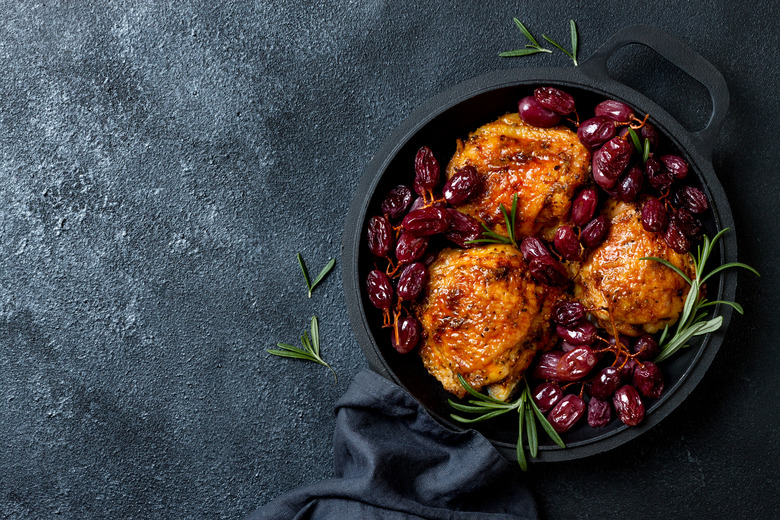What Is An Ovenproof Skillet?
An ovenproof skillet is exactly what it sounds like — a skillet that's safe for use in the oven. But it gets a little more complicated, because a skillet is the sum of its parts and you'll need to know if it's all designed for safe use in the oven, or not.
Tip
Shopping for pots and pans? Ovenproof cookery is a chef's best friend. Cast iron is old-school, but also the toughest pan when it comes to ovenproof cookery, even well beyond 750 F.
Why Use an Ovenproof Skillet?
Why Use an
Ovenproof Skillet?
Stovetop cooking is direct heat, and it accomplishes lots of great things, like getting a solid sear on meats or crisping the outside of potatoes. Eventually, though, too much direct heat means the outside of a food cooks faster than the inside, and this can lead to undercooked meats inside or burnt food on the outside. The ambient heat of an oven means the cooking process is slower and kinder.
For many dishes, the perfect combination is that Maillard reaction that comes from a good sear or flash frying, then finishing it off in the oven. Or maybe you're cooking in advance and you just want to keep the finished dish warm, so popping it from the stove into a preheated oven can keep it at the perfect temperature before your guests arrive. Stove-to-oven cookware is a chef's best friend, so definitely keep this in mind when shopping.
Read more: Cast Iron vs. Cast Aluminum
Is it Ovenproof?
Is it Ovenproof?
If you're not sure if your skillet is ovenproof, you might be lucky to find "ovenproof skillet" symbols on the bottom of the skillet, similar to the symbols that tell you what kind of washing your laundry can handle. If you see a little oven-looking symbol, that means it's oven safe. Yay!
But the problem you now face is, to what temperature? Some cookware is only safe to 350 F. Others are safe up to 700 F. One popular brand is Calphalon, for example, and their range tends to be from 400 to 450 F. In February 2019, the Washington Post offered a comparison of nonstick and cast iron skillets to help readers understand when to use one versus the other.
Factors that affect oven safety include the coating on the pan, what's used for the handles, the lids and even the aesthetic factors like paint. If you're at a loss and you just don't know where your skillet stands, using it in the oven could impact your pan's longevity, cause chemicals in the coating to off-gas, or worse. If you know the manufacturer, you may be able to find out more through their online materials.
Read more: How to Clean a Cast Iron Frying Pan
Ovenproof Skillet Substitutes
Ovenproof Skillet
Substitutes
There aren't a lot of products that do the double-duty you're looking for from a skillet, because it needs to handle stovetop direct heat, then all-over oven heat. Uncoated, seasoned cast iron or plain steel (including handles) in any style can do stovetop-to-oven, but it may not be the right size or shape for your meal. For instance, searing a pork tenderloin and throwing it in the oven can work with a cast iron or steel pizza pan, but if you were making any kind of a braised meat needing a dish with sides, then you might need to use different cookware for each stage.
If you don't have an ovenproof skillet, the best way to proceed is to cook your meal in separate dishes. It's totally fine to sear in a skillet or frying pan, then get the sauces going, and transfer it all into a room-temperature Pyrex casserole to finish cooking in the oven. Just look for something of a similar dimension to the skillet so the surface area yields similar cooking results as your recipe.
And if you're wondering if you can use an ovenproof frying pan in place of an ovenproof skillet, well, of course you can — because they're both the same thing, a flat-bottom, slope-sided pan for frying foods. The straight-sided pan is a sauté pan, but that's another story.
